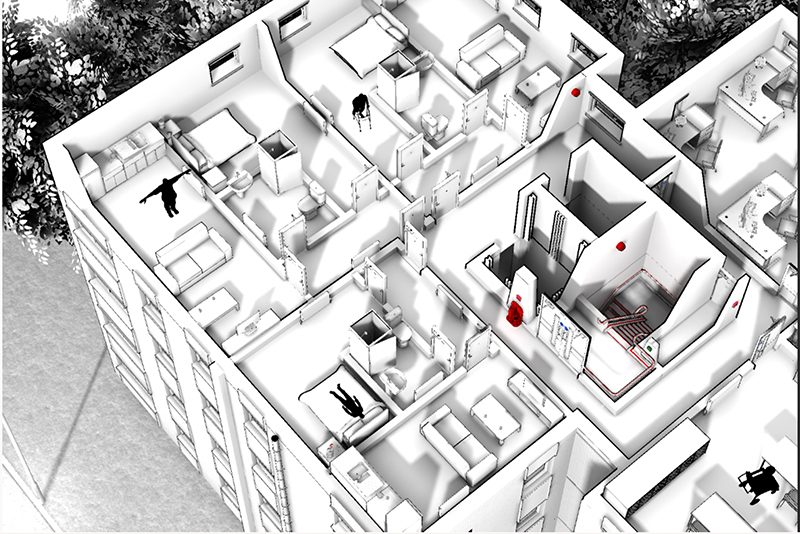Following the events of the Grenfell Tower fire, the subsequent enquiry found that 41% of those who died were disabled, and that there was little to no planning in place for the evacuation of disabled residents. While the Government says it is continuing to consult on the wider issue, Elspeth Grant, Expert PEEPs Advisor at Triple A Solutions, outlines the wider legal liabilities associated with the evacuation planning of disabled people that building owners, safety managers, responsible persons and all those involved in fire safety need to consider.

Elspeth Grant, Expert PEEPs Advisor at Triple A Solutions
There are approximately 14.6 million disabled people in the UK. This means that one in five of the UK population are disabled, with a higher percentage living in social needs accommodation.
Non-disabled people would not accept living in a building from which there was no escape and, where this is the case, swift enforcement action would undoubtedly follow. However, disabled people unable to evacuate the building without the use of a fire-protected lift, are forced to accept this situation. They have no option but to remain in immediate danger until Fire and Rescue Services (FRS) are able to intervene.
Fire Safety professionals are specialists in their own discipline particularly as regards to the Regulatory Reform (Fire Safety) Order 2005 (FSO). However, when providing advice or recommendations to clients, many professionals fail to consider the legal requirements of the Equality Act 2010, Public Sector Equality Duty (PSED) and The Health Safety at Work Act 1974.
Implementation of the requirements of Building Regulations Part M can also help to mitigate the disadvantage to disabled people in an evacuation.
Equality Act 2010
The Equality Act 2010 (EA) defines disabled people as a ‘protected characteristic’. The EA prohibits discrimination in relation to something arising from a person’s disability and creates a duty to make reasonable adjustments for disabled people. In relation to services and public functions, the duty to make reasonable adjustments is owed to disabled people generally and is anticipatory.
While it could be deemed unreasonable to install a fire-protected lift or second stairwell, it is likely to be seen as reasonable to ensure escape routes comply with Building Regulations Part M requirements and to provide a disabled person with an assisted escape device.
It is worth noting that the Equality and Human Rights Commission (EHRC) have advised disabled people that assisted escape devices may be viewed as a reasonable adjustment in a compensation claim.
The duty to make reasonable adjustments is anticipatory in the sense that it requires consideration of, and action in relation to, barriers that impede disabled people prior to an individual disabled person seeking to use the service:
Schedule 2: services and public functions –
“As the duty is owed to disabled persons generally, it is an anticipatory duty which means service providers and people exercising public functions must anticipate the needs of disabled people and make appropriate reasonable adjustments.”
This is a duty to disabled people at large, which applies regardless of whether the service provider knows that a particular person is disabled or whether the building currently has disabled people.
Service providers cannot wait until a disabled person wants to use a service that they provide before they consider their duty to make reasonable adjustments. They should anticipate the requirements of disabled people and the adjustments that may have to be made for them. When a disabled person requests a service, the service provider must already have taken all reasonable steps to ensure that they can be served. Waiting for a disabled person to self-identify prior to putting in place a Personal Emergency Evacuation Plan (PEEP) risks legal action under the EA for discrimination and a breach of the anticipatory duty.
All those involved in fire safety need to be aware that successful compensation claims for breaches of the EA are based on the Vento Scale, with the higher band being between £29,600 – £49,300 (this was increased in April 2022) where there is continued discrimination causing stress.


